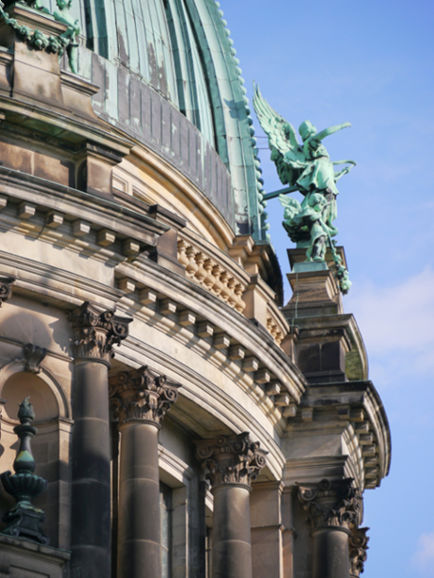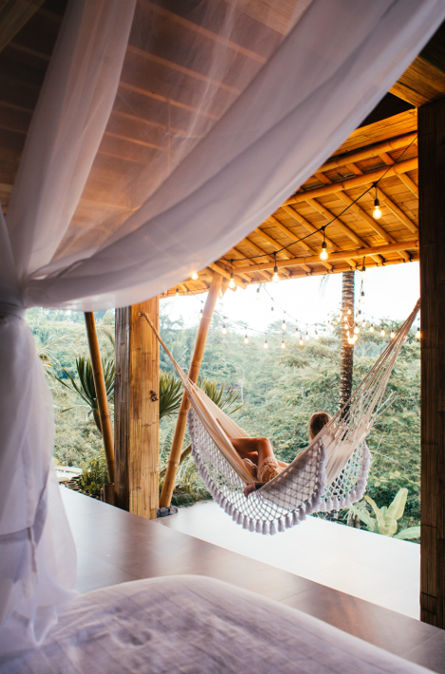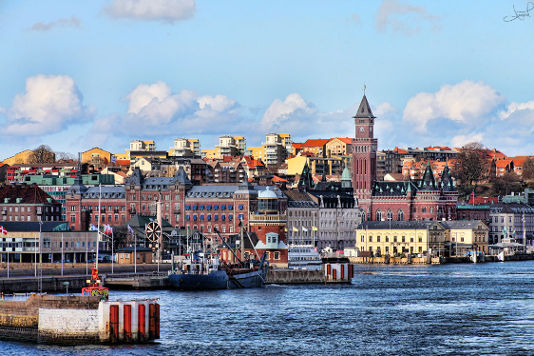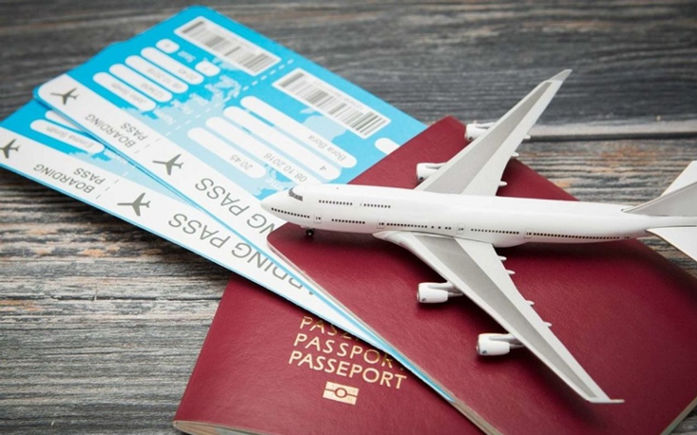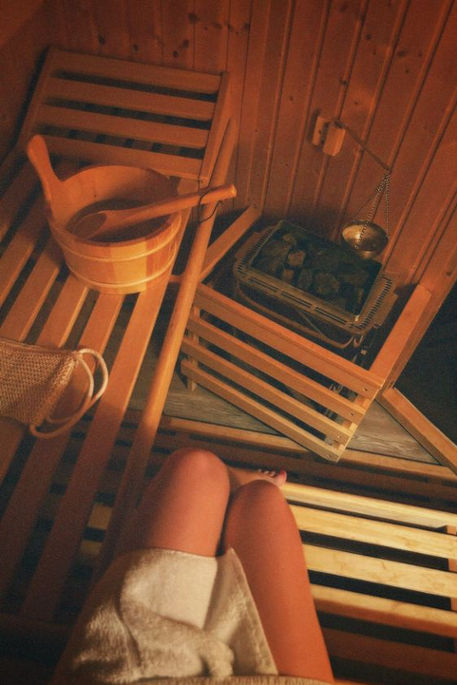Vietnam is a country with a coastline that wrinkles 2,000 miles along the country from north to south. There are plenty of people to meet and a lot to see, do, and eat in Vietnam. It’s easy to follow the tourist trail of historic Hanoi, ethereal Halong Bay, shopping emporium Hoi An, and buzzy Ho Chi Minh City, but push a little further and you’ll be rewarded with some dazzling and memorable experiences.
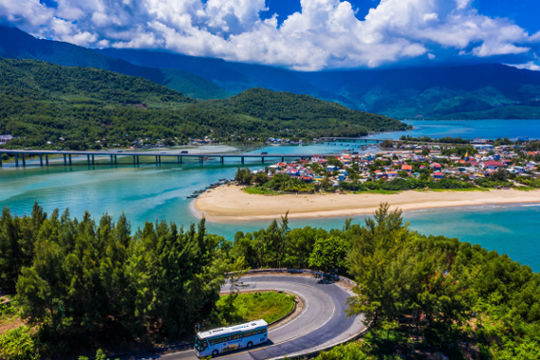
Interesting articles for you:
Best Places to Visit in Europe
Adventures in the Great Outdoors: From Mountain Tops to Seaside Bliss
How to Get Ready for a Journey
Airline tickets and hotels: How to find the best deals
Hanoi
Hanoi is noisy, traffic-choked, and beautiful all at once. The thousand-year-old city of lakes, founded on a bend of the Red River, is full of history, charm, museums, shops, markets, and wonderful street food. Don’t miss the Old Quarter, the heart of the city, where you’ll find lots of food, hotels, and temples cheek-by-jowl with shops. Learn how to dodge the motorbikes while on a street-food tour or exploring the ochre-hued French colonial villas, Ho Chi Minh’s Mausoleum, the Temple of Literature, the “Hanoi Hilton” prison museum of Hoa Lu, and the Vietnam Museum of Ethnology.
Ho Chi Minh City (Sai Gon)
Big cities are often said to be of little interest to keen travelers due to their lack of uniqueness and depth, but Ho Chi Minh City—or Saigon, as we often call it—will possibly do justice to the metropolitan cities out there.
Strategically located in the South of Vietnam, the city plays a key role in the country’s economic and cultural development. In terms of tourism, Ho Chi Minh City is a perfect example of the amicable combination of the dynamic of a modern city and the timeless cultural values of an old town. On one side of the city, you will be easily overwhelmed by the chaotic order flow of traffic, the lively trading activities on every corner, and the dynamic nightlife. You can find yourself lost in the scenes of mossy temples, old open markets, and museums where history is stored and retold to the world. Ho Chi Minh City is also a good base for traveling around Southern cities thanks to a developed transportation link. Finally, make sure to go to Ho Chi Minh City with a hungry stomach since this is where you will sample some of the best and most unique street foods.
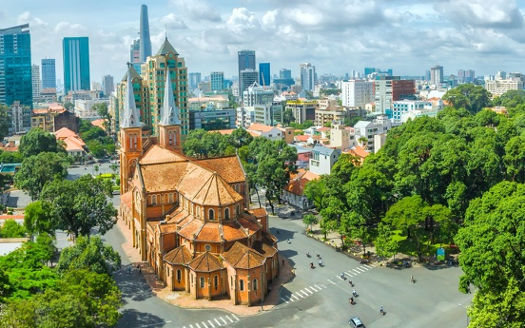
Ha Giang
Ha Giang is Vietnam’s northernmost region, pushing up against the border with China. It’s an otherworldly landscape of sugarloaf peaks, mountain passes, and rice paddies carved into impossibly steep mountains. Find villages of Red Dzao, Flower Hmong, and other local minorities, markets, eco-stays, and a window into a rural world of timeless traditions such as weaving. Don’t miss the palace of the Hmong king, who raked in revenue from opium farming. En route, stop at the dazzling rice paddy region of Mu Cang Chai.
Halong Bay
Boats—from junks to elegant luxury vessels—cruise through the waters of UNESCO-protected Halong Bay, studded with thousands of craggy limestone outcrops. It’s an ethereal landscape, and each turn of weather can bring dense fog or crisp blue skies. It won’t matter—it’s all enchanting. To make the most of it, head out on a boat for at least two nights to cruise to the outer “fortress” of towers—Bai Tu Long Bay. It’s more magical, and it escapes the crowds of one-day and one-night boats.
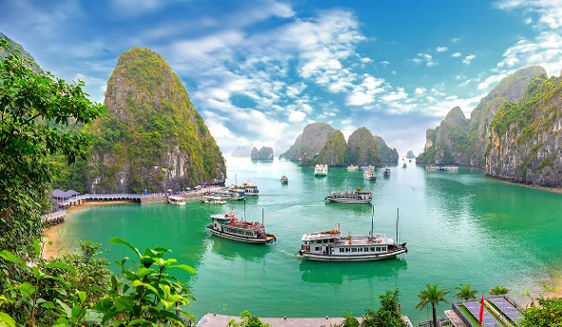
Hue
Hue was the cultural and political power base of the Nguyen emperors, Vietnam’s last imperial dynasty. They built a citadel, gilded in bronze, enamel, and lacquer, with gates for themselves, elephants, and their minions, based on the Forbidden City of Beijing. This city is often overlooked in favor of Hoi An as a central Vietnam stop, but don’t miss it. The thousand-plus dishes of the imperial household are still eaten, too. From here, explore the Demilitarized Zone marking the border established in 1954 between the communist north and the US-backed south.
Da Nang
Besides the city of Hoi An, Da Nang is another destination in Central Vietnam that was voted on the list. For many years, Da Nang has been known as not only the cleanest but also the safest one. Having the fastest rate of development across the country, Da Nang has successfully built and operated an effective transportation system, including an international airport, various bus and train stations in the city center, and reliable taxis throughout the city.
You would easily find that Da Nang is a well-organized city with a neat urban landscape and spectacular surroundings of mythical mountains, natural caves, and one of the best beaches in the world—My Khe Beach. Apart from natural gifts, Da Nang also offers a wide range of architectural places of interest, namely the world-renowned Golden Bridge of Ba Na Hills, the Dragon Bridge, and Linh Ung Pagoda. In short, Da Nang is the “whatever your expectations are for a destination, it will possibly fulfill them” kind of place.
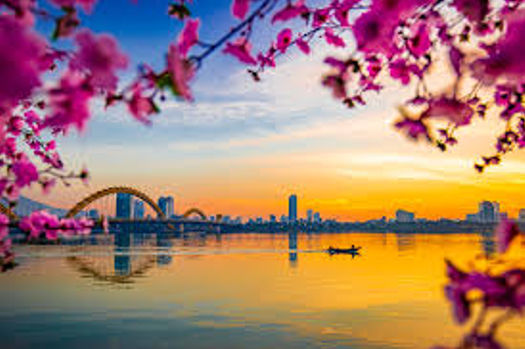
Hoi An
Hoi An may no longer be an unfamiliar name among world travelers. Voted twice as one of Asia’s leading cultural destinations in 2019 and 2021, this lovable city has gradually affirmed its charm.
Hoi An is not only a poetic heritage town but also a prime location where the cultural essence from centuries of history of the East and the West comes together. The ancient heritage town is highlighted by its distinctive archetype—red tile roofs contrasted against the background of the iconic yellow walls and antique wooden doors—denoting a sense of tranquility and quaintness. We fall in love with Hoi An for the colorful lanterns lit up every night, the little cafes overlooking the poetic Hoai River, and the peaceful bicycle rides along the paddy fields.
Hoi An pleases adventure seekers with a wide range of outdoor activities, such as exotic basketboat rides and surfing classes, and culture vultures with many art galleries, countless ancient assembly halls, temples, and centuries-old private houses. This is also where you could have the best custom dress tailored by extraordinarily skilled tailors in town within one day or two, guaranteed to blow your mind.
Despite its huge popularity, Hoi An has shown great efforts to preserve its heritage status and vintage vibes, and you will surely feel it as soon as you arrive in this little but magical town.
Dalat
Dalat is a quirky place. A former French hill station in the pine-scented highlands with a central lake is ringed by attractive early 20th-century homes and villas (hotels, museums), markets, flower gardens, and waterfalls. There’s even a golf course. Today, the city is filled with bars and cute cafés and is a great base from which to explore a load of kooky spots, including the Crazy House homestay, the cactus and coffee playground Kombi Land, and a dragon statue made from thousands of glass bottles. Don’t miss checking out the French-built railway station, a Wes Anderson shoo-in.
Mekong Delta
The liquid fingers of the Mekong River slink through southern Vietnam into the sea. Here you’ll find a mostly rural way of life with floating markets, temples and churches, and market farms harvesting coconut, bananas, mangos, and veg. It’s not so much specific sites but a dip into the region’s culture—a mix of Cham, Khmer, Vietnamese, war history, wetlands and birds, and delicious food.
Con Dao
Con Dao was once a prison island run by the French and then the Americans. Today, this remote island off the south coast of Vietnam is a nature paradise, an internationally recognized (by Ramsar) wetland area, and home to the most important location for nesting sea turtles in Vietnam. Hike, snorkel, dive, sunbathe on the beautiful beaches, visit the turtle sites, and watch the squid boats at work. Visit its museum and sites, too: the cemetery of Vietnamese martyrs’ graves features seats built for their ghosts. You’ll want to stay at the fabulous Six Senses Con Dao.
Vietnam is a tropical country; tourist destinations can welcome visitors all year round. Beaches, islands, mountains… you can find them all in Vietnam. If you’re still hesitating to choose a place to explore, don’t hesitate to come here.

